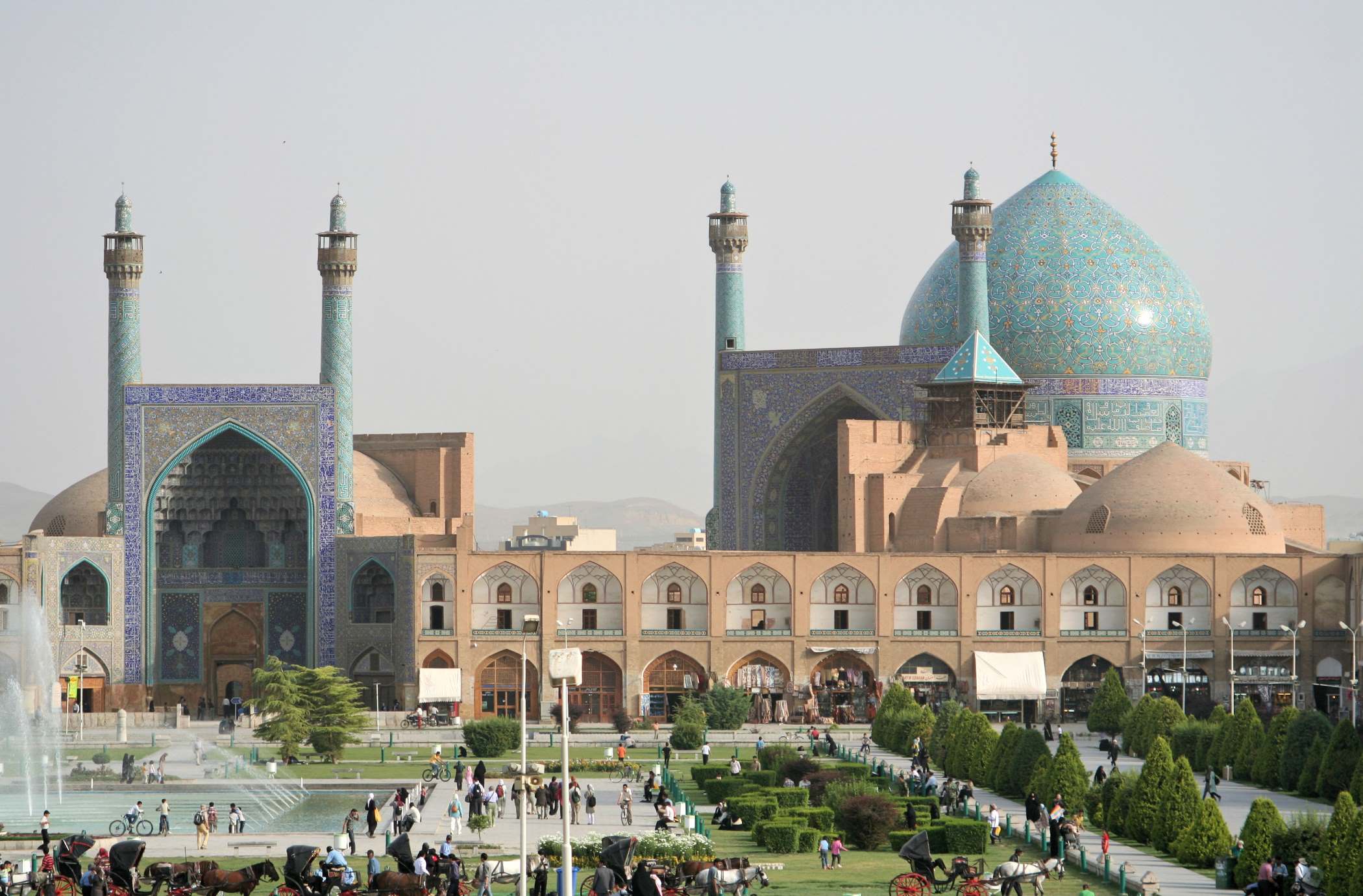
The Shah Mosque, also known as the Imam Mosque, is one of the most magnificent landmarks in Iran. With its stunning architectural design and rich historical significance, it attracts visitors from all over the world. From the intricate tilework to the grand entrance, there is much to discover and admire within its walls.
In this article, we will delve into nine astonishing facts about the Shah Mosque, shedding light on its construction, architectural features, and cultural importance. Whether you are a history buff or simply fascinated by architectural marvels, the Shah Mosque is sure to captivate your imagination. So, let’s embark on a journey through time and unravel the secrets of this iconic landmark.
Key Takeaways:
- Shah Mosque is a stunning masterpiece in Isfahan, Iran, known for its intricate tilework and massive courtyard. It’s also an astronomical wonder, perfectly aligned with the sunrise during the equinoxes.
- Designated as a UNESCO World Heritage Site, Shah Mosque is not only a place of worship but also a spiritual retreat with tranquil prayer halls and quiet corners for meditation.
The Grandeur of Shah Mosque
Shah Mosque, also known as Imam Mosque, is an extraordinary masterpiece located in Isfahan, Iran. It stands as a shining example of Islamic architecture, renowned for its stunning beauty and grandeur.
A Crowning Jewel of Safavid Dynasty
Shah Mosque was commissioned by Shah Abbas I, the ruler of the Safavid Dynasty, during the 17th century. This magnificent structure served as a powerful symbol of the empire’s grandeur, showcasing their architectural and artistic prowess.
Intricate Tilework and Calligraphy
One cannot help but be mesmerized by the intricate tilework adorning the walls and domes of Shah Mosque. The beautiful patterns and meticulously crafted calligraphy showcase the mastery of Persian artisans from that era.
The Largest Persian Mosque
Shah Mosque is renowned for its sheer size and grand scale. With a massive courtyard spanning over 20,000 square meters, it is considered the largest Persian mosque in terms of area.
An architectural marvel
The unique architectural design of Shah Mosque is a sight to behold. The striking combination of blue and turquoise tiles, along with the intricate geometric patterns, creates a mesmerizing visual display that leaves visitors in awe.
A Reflection Pool
Adding to its splendor, Shah Mosque features a vast reflection pool in its courtyard. The shimmering water mirrors the domes and intricate details, creating a magical ambiance that further elevates the mosque’s beauty.
An Astronomical Wonder
A lesser-known fact about Shah Mosque is its astronomical feature. The main entrance is perfectly aligned with the sunrise during the equinoxes, creating a breathtaking phenomenon that highlights the precision and ingenuity of its builders.
A Spiritual Retreat
Shah Mosque was not just a place of worship but also a spiritual retreat, with tranquil prayer halls and quiet corners for meditation. Its serene ambiance and intricate architectural details create a peaceful atmosphere for visitors to connect with their spirituality.
A UNESCO World Heritage Site
Recognizing its immense historical and cultural importance, Shah Mosque was designated as a UNESCO World Heritage Site in This prestigious accolade solidifies its status as a cherished global treasure.
In conclusion, the 9 astonishing facts about Shah Mosque showcase its unparalleled beauty, architectural brilliance, and cultural significance. Visitors from around the world are captivated by its grandeur, intricate tilework, and spiritual ambiance. As a UNESCO World Heritage Site, Shah Mosque continues to be a testament to the rich history and artistic achievements of the Safavid Dynasty.
Conclusion
In conclusion, the Shah Mosque is a truly awe-inspiring landmark that showcases the grandeur and architectural brilliance of the Islamic world. With its exquisite tile work, intricate calligraphy, and stunning domes, it beckons visitors from all over the world to experience its beauty. The rich history and cultural significance of the mosque make it a must-visit destination for anyone traveling to Isfahan, Iran. From the fascinating symbolism embedded in its design to the intricate details found in every nook and cranny, the Shah Mosque is a testament to the artistic and architectural prowess of the past. So, if you ever find yourself in Isfahan, be sure to pay a visit to the Shah Mosque and immerse yourself in its remarkable splendor.
FAQs
1. What is the Shah Mosque?
The Shah Mosque, also known as the Imam Mosque, is a famous landmark located in Isfahan, Iran. It is one of the most stunning examples of Persian Islamic architecture.
2. When was the Shah Mosque built?
The construction of the Shah Mosque began in 1611 and was completed in 1638.
3. Who commissioned the construction of the Shah Mosque?
The mosque was commissioned by Shah Abbas I, one of the most influential rulers of the Safavid dynasty in Iran.
4. What makes the Shah Mosque unique?
The Shah Mosque stands out for its intricate tile work, elaborate calligraphy, and magnificent domes. The harmonious blend of these elements creates a visually captivating structure.
5. Can visitors enter the Shah Mosque?
Yes, visitors are allowed to enter the Shah Mosque. However, it is important to dress modestly and respectfully, covering the head and legs.
6. Are there any guided tours available?
Yes, guided tours are available for visitors who want to learn more about the history and significance of the Shah Mosque. These tours provide deeper insights into the architectural and cultural aspects of this magnificent landmark.
7. Is the Shah Mosque accessible to people with disabilities?
Efforts have been made to make the Shah Mosque accessible to people with disabilities. However, due to its age and architectural constraints, there may still be some areas that are not easily accessible.
8. Are there any other attractions near the Shah Mosque?
Yes, there are several other attractions near the Shah Mosque, including the Ali Qapu Palace, Chehel Sotoun Palace, and the famous Naqsh-e Jahan Square.
9. Can the Shah Mosque be visited during prayer times?
Yes, the Shah Mosque can be visited during prayer times. However, visitors are expected to maintain a respectful and quiet demeanor during these times.
Shah Mosque's grandeur leaves visitors awestruck, but there's more to explore. Delve into Iranian culture at Bazare Bozorg Isfahan, marvel at Fatehpur Sikri's World Heritage Site status, or find spiritual solace at Sheikh Khalifa Bin Zayed Al Nahyan Mosque. Each destination offers unique insights into history, architecture, and faith. Why not embark on a journey of discovery today?
Was this page helpful?
Our commitment to delivering trustworthy and engaging content is at the heart of what we do. Each fact on our site is contributed by real users like you, bringing a wealth of diverse insights and information. To ensure the highest standards of accuracy and reliability, our dedicated editors meticulously review each submission. This process guarantees that the facts we share are not only fascinating but also credible. Trust in our commitment to quality and authenticity as you explore and learn with us.


